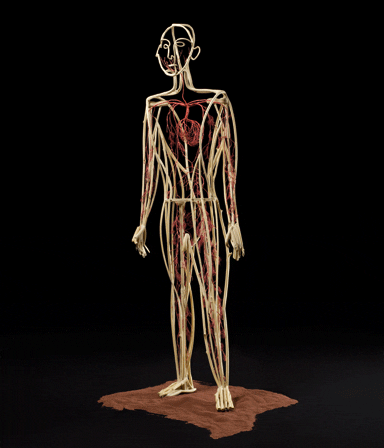
words Julian Worrall
Is the Future back? Despite climate change, economic gloom and the ongoing clash of civilisations, a clutch of recent shows here and there suggest a recovery in the idea of the future as a realm of promise rather than of dread. In Tokyo, we have recently witnessed the Space for your Future show at the Museum of Contemporary Art put together by one of Japan’s most pioneering curators, Yuko Hasegawa. In a more nostalgic vein, London’s Science Museum is soon to do a show about Dan Dare and the birth of British high-tech, a time when the future was a realm of upbeat fantasy in comic-book colours. Could it be that the future is regaining its long-lost lustre?
Back in Tokyo, the opening of XXIst Century Man, directed by Issey Miyake, marks the one-year anniversary of the opening of 21_21 Design Sight, the first museum in Japan exclusively devoted to design. Here too the topic is the future. Aiming at a high, even mystical target, the show seeks to “identify and display 21st Century man’s soul – what people’s hopes are and where their power lies.” The ambitions and timing of the show invite an assessment of the new museum as much as of its content. Unfortunately, this show fails to meet the challenge of such a lofty aspiration, raising questions about the capacity of the institution itself to mount shows of sufficient substance to realise its potential.
Eleven pieces make up the show. For such a bold theme, in Tadao Ando’s cavernous subterranean spaces, this represents a rather small collection. Such selectivity offers the potential for a tightly orchestrated ensemble of ideas, but here the overall impression is indistinct. The outline of a storyline is discernible: serpent and dragon motifs at the start, archetypal human figures next, then a diverse group of pieces engaging the processes and forms of industry. But what is the significance of this sequence? Rudimentary notes mean that visitors are on their own when it comes to weaving a narrative thread. Individually, some of the works are fresh and captivating – the carnivalesque totem pole in newspaper and duct tape of Koutarou Sekiguchi’s installation, It’s a Departure at a Bright Night, is filled with vitality, and one senses a Bauhaus-era delight in the futurist shapes of the vacuum cleaner androids and their wardrobe. But taken together, the exhibition is a cast of characters, some vivid, some less so, in search of a script.
The clearest thread is the creative milieu of Issey Miyake himself. This is essentially an “Issey and friends” gathering. The materials for Nendo’s Cabbage Chair and Dui Seid’s Stickman, both made for this show, were sourced in Miyake’s atelier; an early Isamu Noguchi painting from Miyake’s personal collection, whose calligraphic rendition of the nude has apparently been a continual personal inspiration, is given a central position. The most imposing piece is Miyake’s own contribution, Myth of the 21st Century. A vast oriental dragon formed from laboriously knitted packing paper coils around a melodramatically lit space, while mannequins swaddled in paper emerge like nymphs in a stage setting for some overblown Wagnerian epic. “The fears of today and hopes for tomorrow” runs the interpretive gloss, laying the symbolism on thick.
The intimacy of the personal meanings that underly this show conveys an indifference towards public communication, hobbling its capacities to shape the larger conversation about design and society. One feels like an interloper in a private game of elaborate nods and winks. Reinvesting the future with the utopian energies and imagination that it once had requires more than just personal inspiration.
XXIst Century Man is at 21_21 Design Sight Museum, Tokyo, until 6 July
 The Wind installation in Issey Miyake’s Creative Room
The Wind installation in Issey Miyake’s Creative Room
 Stickman by Dui Seid
Stickman by Dui Seid


















